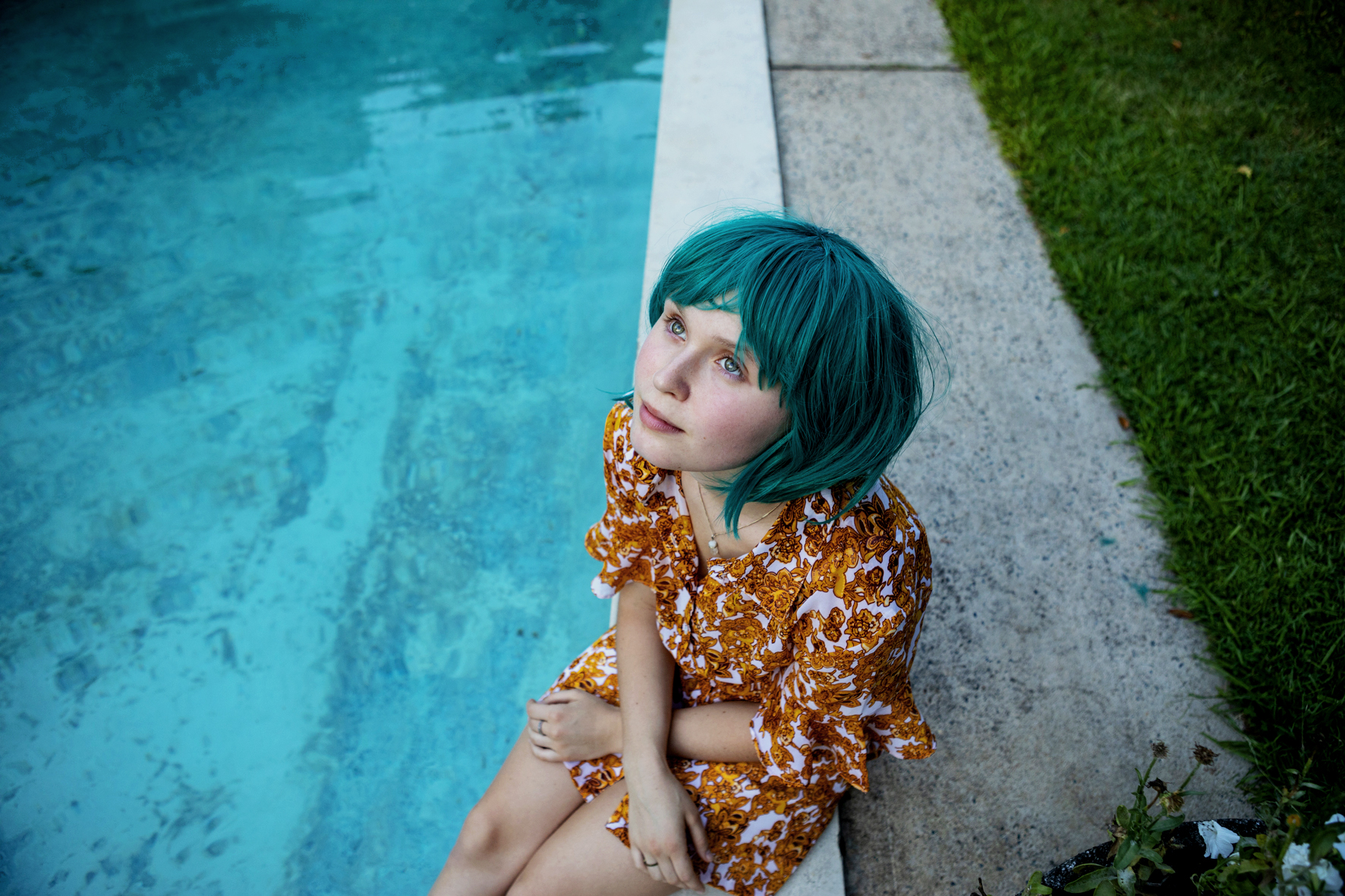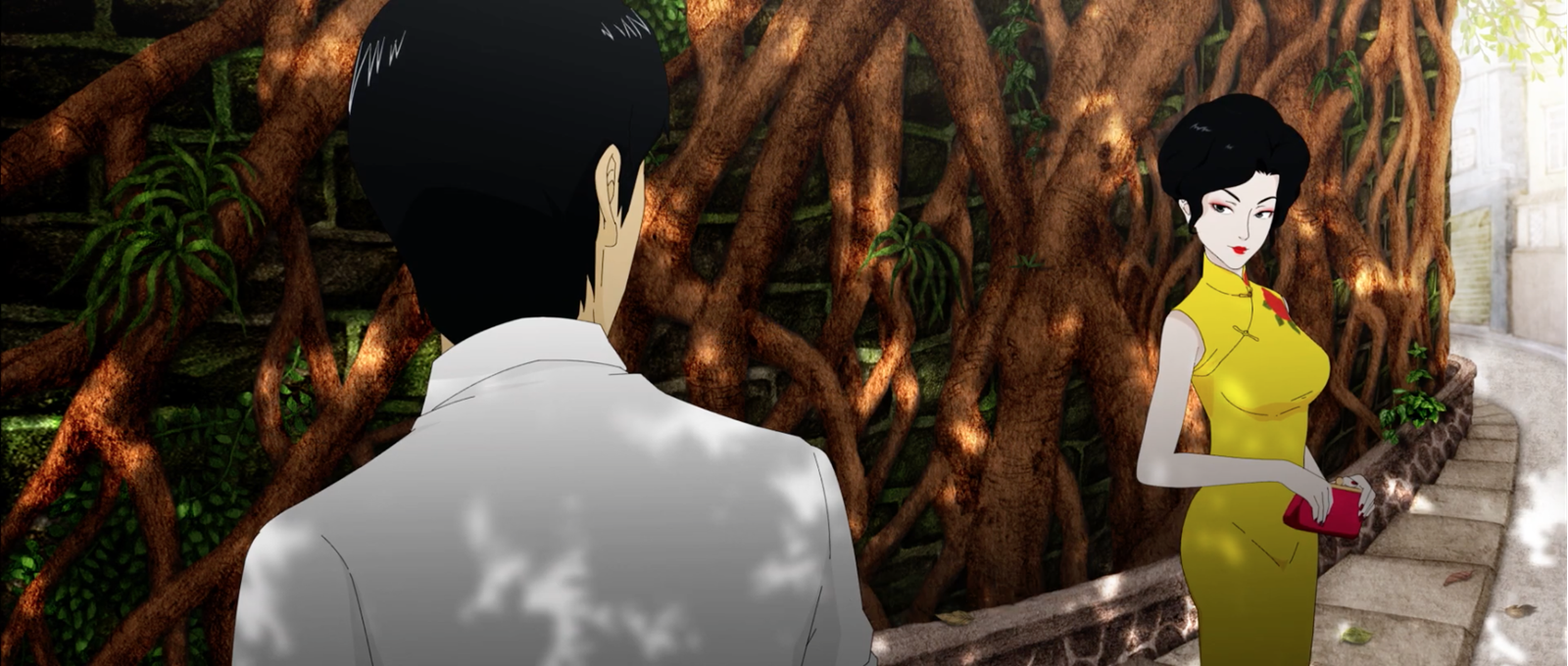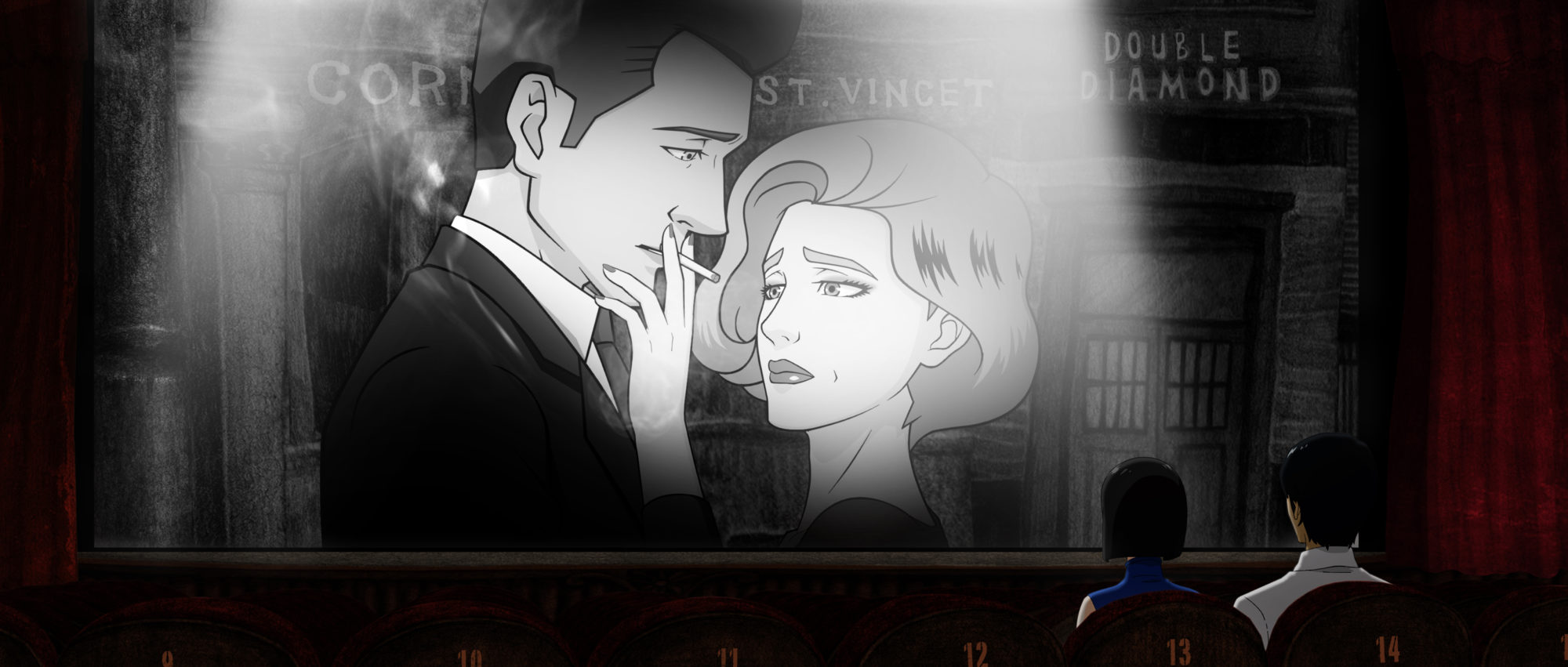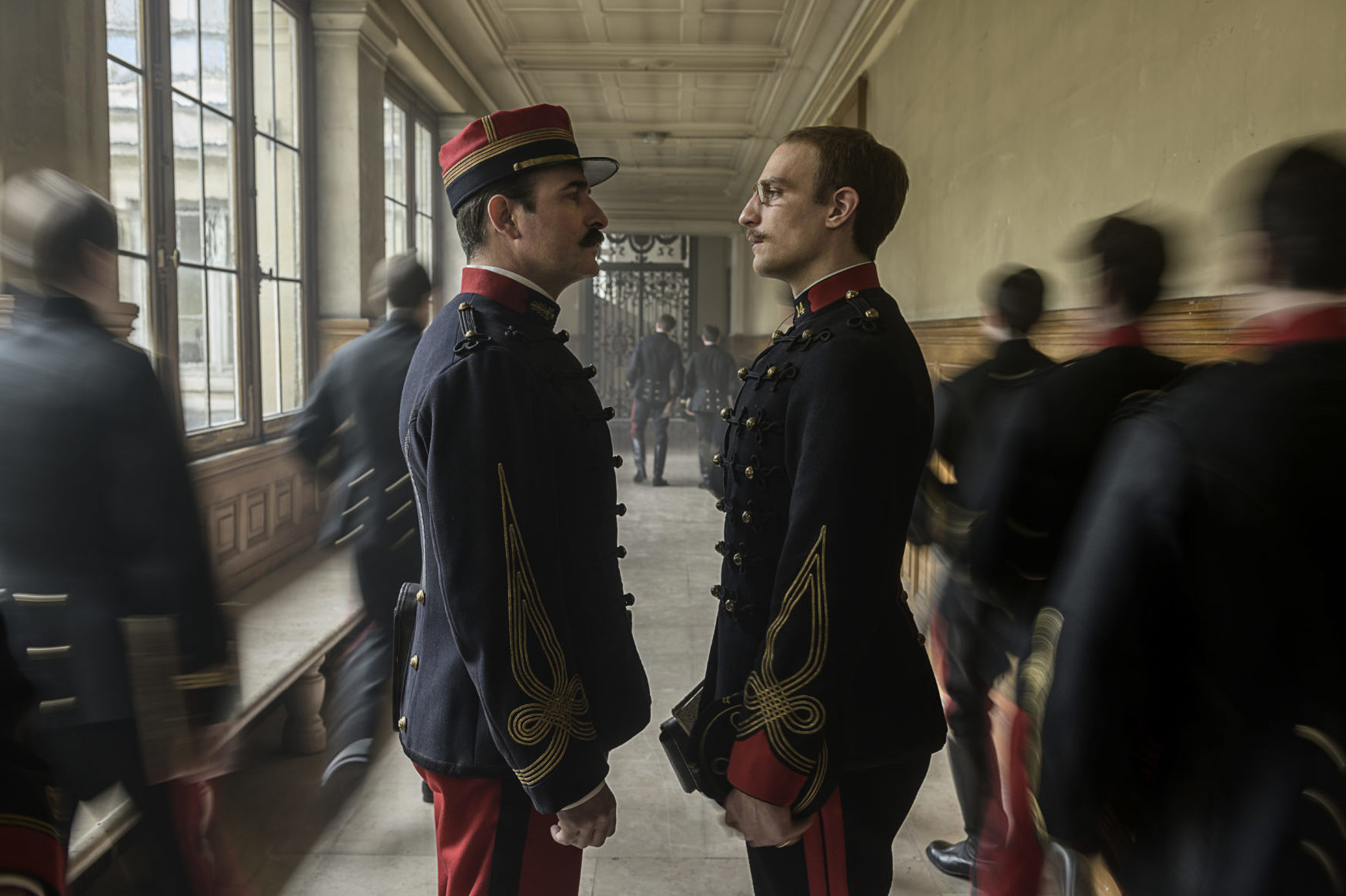Venice 76. A Daydreaming Session
 The Venice Film Festival’s ecosystem is endowed with something peerless. That context is able to produce a specific inner transference, even after several years of direct experience. Everything there constantly disperses: meanings, voices, movies. The apparent isolation of that thin line of land separating the sea and the lagoon turns into a threshold for encounters, a point of collision, peripheral epicentre where thoughts are revealed in their rawest form. That place expresses the power of difference.
The Venice Film Festival’s ecosystem is endowed with something peerless. That context is able to produce a specific inner transference, even after several years of direct experience. Everything there constantly disperses: meanings, voices, movies. The apparent isolation of that thin line of land separating the sea and the lagoon turns into a threshold for encounters, a point of collision, peripheral epicentre where thoughts are revealed in their rawest form. That place expresses the power of difference.
As a noteworthy analyst, the festival acts as a subject on which a part of yourself is unconsciously projected. It bases its deep capacity of fascination on persistent mechanisms of waiting (queues) and distance (ferry rides). Instead of real-life experiences to talk about, movies become the objects of analysis. Surrounded by this impressive lagoon setting, the past merges with the present and a silent dialogue is established between the interlocutors. The festival usually elides the answer by forcing the viewer to gaze back at the dawn – that reddish reflection on the water of the sun rising on the horizon – at the beginning of a day of conflicting screenings. The analyst is keeping the patient waiting. It tends to procrastinate its real presence. The whole relational structure depends on a projective device, continuously and discontinuously activated, by one or the other element in play. Countertransference is switched on when something triggers; when the festival – its domains, its apparatus – starts to connect to every single user, after days of substantial mistrust. A long-time and consistent experience is necessary to lead to a fruitful intercourse. Only in this way the projective organism finally unfolds and reveals itself for what it is: an incessant dialogue in the mirror.
This is how, by means of a vision, a complex overview of thoughts, truths and intimate doubts begins. The clash with the image gives a contingent form to ideas that otherwise would wander diaphanously on the surface of minds. Not many films-experiences deserve a proactive solicitation. The festival reveals a system of personification (through movies) as a reaction to the intense stimulations of the spectator’s voyeuristic gaze. Like a ghost who never ceases to return, some scenes and characters impress and shake consciousnesses, become instantly familiar and intimately metabolized.
 This year no film managed to replace Alfonso Cuaron’s Rome, winner of the 75th edition, where in competition there was also Carlos Reygadas who presented the surprising Nuestro Tiempo, alas fallen into oblivion too quickly. Not every year is a very good year. An exception? Babyteeth, the debut feature by Australian director Shannon Murphy, based on a play by Australian playwright Rita Kalnejais (also having her debut as a screenwriter). The movie tells the story of Milla, a gravely ill teenager, who madly falls in love with Moses, an older small-time drug dealer. The dichotomy between humour and pain, life and death, tenderness and rage is expressed with awareness. Family appears as a moving apparatus capable of evolving according to the feelings of their members.
This year no film managed to replace Alfonso Cuaron’s Rome, winner of the 75th edition, where in competition there was also Carlos Reygadas who presented the surprising Nuestro Tiempo, alas fallen into oblivion too quickly. Not every year is a very good year. An exception? Babyteeth, the debut feature by Australian director Shannon Murphy, based on a play by Australian playwright Rita Kalnejais (also having her debut as a screenwriter). The movie tells the story of Milla, a gravely ill teenager, who madly falls in love with Moses, an older small-time drug dealer. The dichotomy between humour and pain, life and death, tenderness and rage is expressed with awareness. Family appears as a moving apparatus capable of evolving according to the feelings of their members.
The inherent destructiveness of a character like Moses, not by chance blessed with a guiding and prophetic name, in Milla’s eyes becomes pure dynamism of life, energy that nourishes her exhausted body. Because of this change of perspective, the whole family will finally have to deal with Moses, accepting some disadvantages. The family tensions involved are depicted with a considerable speculative talent, and a careful introspective examination captures each character on stage. The conflict persists until Moses finally enters the core, then an empathetic emotion begins to viscerally cross the organs of the audience. The film touches, not trivially.
In a festival of this kind, the relation between viewer and screen, as well as intensive, also becomes extensive. During more than 10 days of continuous filming (at least 3 screenings per day), the body and mind, from active protagonists in this film economy, become mere objects forgotten in the wind, continuously shaken by the flows investing them. Every lucid judgment suffers, and so few are the voices that remain authoritative during those days of screenings. A so-called festival should once again reflect on what it means to be a spectator – even if the grammar of vision remains the same, the conditions that activate it change dramatically.
 The press screening of Hong Kong director Yonfan’s No. 7 Cherry Lane, for example, was scheduled the evening before the premiere open to the public in Sala Grande. So far nothing strange, this happens several times during the festival, except for the nature of such daring animated cinema, which requires different attention from that which can be granted at the end of a day full of other films. No. 7 Cherry Lane is Yonfan’s first animated film, somehow a kind of debut. Designed first as 3-D animation, it was then hand-drawn as 2-D animation with 60 artists, and it is said this long process to be a first for an animated feature film. Yonfan’s love letter to Hong Kong appears more relevant than ever. The main character is Ziming, a Hong Kong University undergraduate student, entangled between his feelings for Mrs Yu, a self-exiled mother from Taiwan in the White Terror period, and her beautiful daughter Meiling. In this love triangle forbidden passions take shape; in the background, the turbulent Hong Kong times of 1967. The film is a hymn of love, an open and endless mention of personalities dear to the director, place of meeting (and clash) of the West and the East, of romances and classic films. In the flow we find, on the one hand, Remembrance of Things Past by Proust and, on the other, the classic Chinese Dreams of the Red Chamber; Simone Signoret elevates as a muse of seduction and liberation, The Graduate by Mike Nichols – a film precisely released in 1967 – as a cinematic reference. The film doesn’t hide its desire to underline the sources from which it draws inspiration but it does so in such a dreamy and ephemeral way that only sweetness remains in this gesture. It is an erotic, delicate and fragile dream that timidly manages to impose its fantasy on the surrounding environment. The deliberately imperfect animation leaves room for attention to detail on which all the eroticism finds renewed vigour.
The press screening of Hong Kong director Yonfan’s No. 7 Cherry Lane, for example, was scheduled the evening before the premiere open to the public in Sala Grande. So far nothing strange, this happens several times during the festival, except for the nature of such daring animated cinema, which requires different attention from that which can be granted at the end of a day full of other films. No. 7 Cherry Lane is Yonfan’s first animated film, somehow a kind of debut. Designed first as 3-D animation, it was then hand-drawn as 2-D animation with 60 artists, and it is said this long process to be a first for an animated feature film. Yonfan’s love letter to Hong Kong appears more relevant than ever. The main character is Ziming, a Hong Kong University undergraduate student, entangled between his feelings for Mrs Yu, a self-exiled mother from Taiwan in the White Terror period, and her beautiful daughter Meiling. In this love triangle forbidden passions take shape; in the background, the turbulent Hong Kong times of 1967. The film is a hymn of love, an open and endless mention of personalities dear to the director, place of meeting (and clash) of the West and the East, of romances and classic films. In the flow we find, on the one hand, Remembrance of Things Past by Proust and, on the other, the classic Chinese Dreams of the Red Chamber; Simone Signoret elevates as a muse of seduction and liberation, The Graduate by Mike Nichols – a film precisely released in 1967 – as a cinematic reference. The film doesn’t hide its desire to underline the sources from which it draws inspiration but it does so in such a dreamy and ephemeral way that only sweetness remains in this gesture. It is an erotic, delicate and fragile dream that timidly manages to impose its fantasy on the surrounding environment. The deliberately imperfect animation leaves room for attention to detail on which all the eroticism finds renewed vigour.
 As the French film theorist Christian Metz stated in an innovative way in 1977, the scopic regime in the cinematographic structure defines its specificity on the absence of the object of vision. Thanks to this, the emergence of dynamics of desire, identification and immersion, as well as repulsion, displeasure and boredom, is completely different from those of other machineries designed to give the viewer a connoted space (such as theatre). That absence lies beyond a spatial distance, opening up to a temporal dimension that leads to the simulation of a context through moving images, making this believable. Roman Polanski adds a different meaning and value to this mechanism. In addition to the absence of actors on the screen, there is also the absence of the director in the theatre. Ghost of a ghost. Jean Dujardin, protagonist of J’accuse, even described him as a shaman. The movie paid the sterile controversy that accompanied the director’s presence-absence at the festival. It was a pity; it was the most consistent in competition. It deserved, like the other two films mentioned above, much more than Joker, of which I will not speak here – except to wish long life to Joaquin Phoenix.
As the French film theorist Christian Metz stated in an innovative way in 1977, the scopic regime in the cinematographic structure defines its specificity on the absence of the object of vision. Thanks to this, the emergence of dynamics of desire, identification and immersion, as well as repulsion, displeasure and boredom, is completely different from those of other machineries designed to give the viewer a connoted space (such as theatre). That absence lies beyond a spatial distance, opening up to a temporal dimension that leads to the simulation of a context through moving images, making this believable. Roman Polanski adds a different meaning and value to this mechanism. In addition to the absence of actors on the screen, there is also the absence of the director in the theatre. Ghost of a ghost. Jean Dujardin, protagonist of J’accuse, even described him as a shaman. The movie paid the sterile controversy that accompanied the director’s presence-absence at the festival. It was a pity; it was the most consistent in competition. It deserved, like the other two films mentioned above, much more than Joker, of which I will not speak here – except to wish long life to Joaquin Phoenix.
 From beginning to end Polanski is rigorous and formal. This takes to not expire either in comedy nor tragedy, remaining cynical and cold, historical. The camera is accurate and never hesitates, it stylistically approaches perfection. Based on the novel An Officer and a Spy by Robert Harris (the screenwriter), the movie tells the well-known Dreyfus affair that struck the Third French Republic from 1894. The story is told from the point of view of the army officer Georges Picquart, who discovers the secrets, deceptions and corruption behind the degradation of the promising young Jewish officer Alfred Dreyfus who, for espionage for Germany, is sentenced to life imprisonment on Devil’s Island. It will not be easy to reveal the truth, but thanks also to the intervention of the press, public opinion and in particular of Emile Zola, the fault comes to the surface and justice is done. This story should give rise to a happy ending, but the director is not moved by the positive outcome of the events: the film ends with a detached dialogue between Picquart and Dreyfus, with the latter complaining that he didn’t have the same rights as the superior in terms of professional recognition. Where it would be easy to imagine, after years of struggle and abuse, some form of reconciliation between two men who fought together, this is denied, as any form of personal involvement. All that remains is the state: its diplomacy, its discipline.
From beginning to end Polanski is rigorous and formal. This takes to not expire either in comedy nor tragedy, remaining cynical and cold, historical. The camera is accurate and never hesitates, it stylistically approaches perfection. Based on the novel An Officer and a Spy by Robert Harris (the screenwriter), the movie tells the well-known Dreyfus affair that struck the Third French Republic from 1894. The story is told from the point of view of the army officer Georges Picquart, who discovers the secrets, deceptions and corruption behind the degradation of the promising young Jewish officer Alfred Dreyfus who, for espionage for Germany, is sentenced to life imprisonment on Devil’s Island. It will not be easy to reveal the truth, but thanks also to the intervention of the press, public opinion and in particular of Emile Zola, the fault comes to the surface and justice is done. This story should give rise to a happy ending, but the director is not moved by the positive outcome of the events: the film ends with a detached dialogue between Picquart and Dreyfus, with the latter complaining that he didn’t have the same rights as the superior in terms of professional recognition. Where it would be easy to imagine, after years of struggle and abuse, some form of reconciliation between two men who fought together, this is denied, as any form of personal involvement. All that remains is the state: its diplomacy, its discipline.
At a certain point the session ends, just when finally on that chair you start to feel comfortable. Let’s leave the theatre with the regret of not having seen, said enough. There is another line to take the ferry, but this time no thought worries the minds, the echoes of what you have heard, of what you have seen – even seeing creates evocative echoes – dissipate in the wet air of the lagoon at nightfall.
Even the body would yearn for that weightlessness offered by the ethereal structure of the clouds in the sky, but what pervades it most is the shining night of the sea, on which rest all the images, the voices and the projections of our journey.
